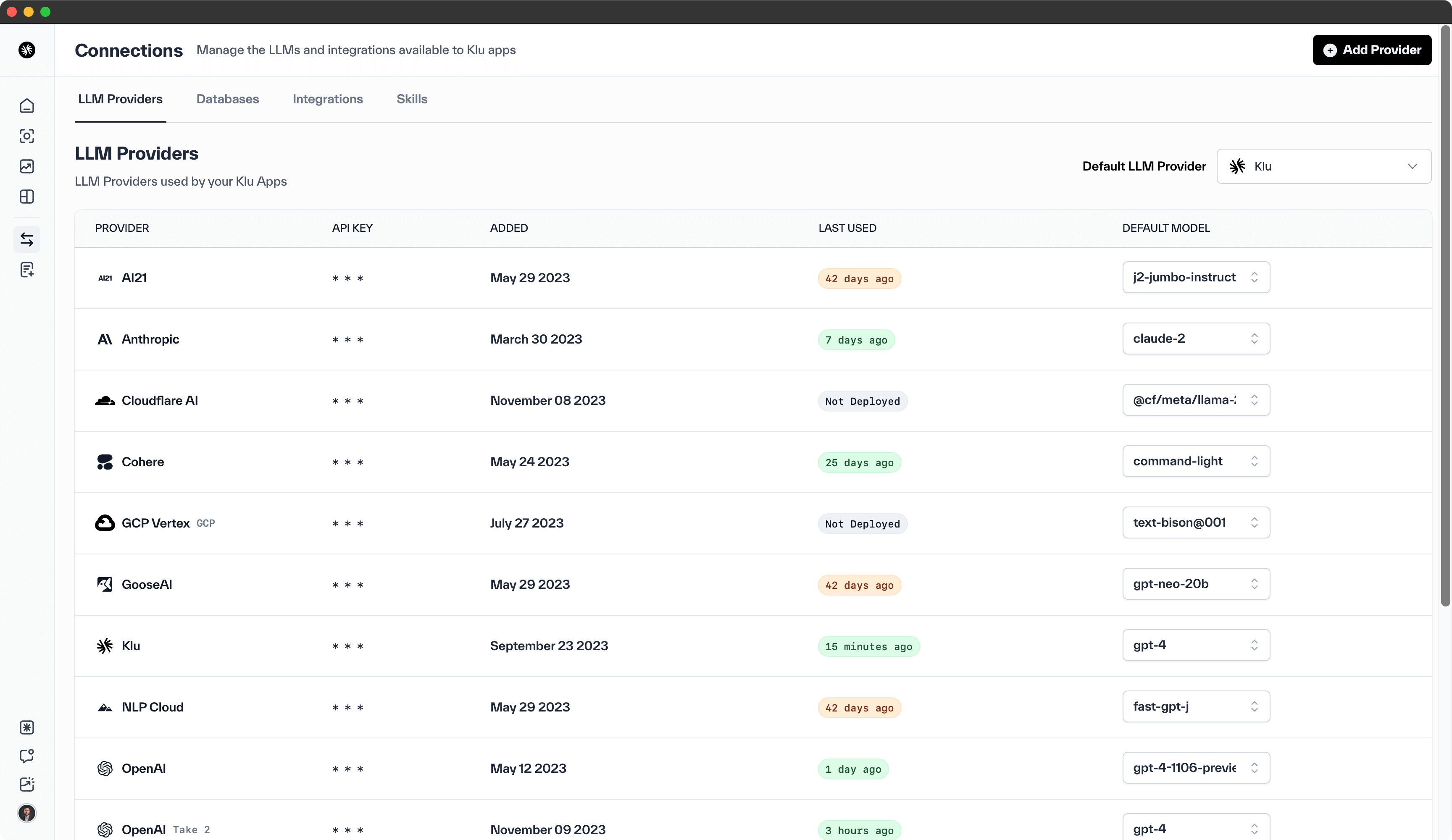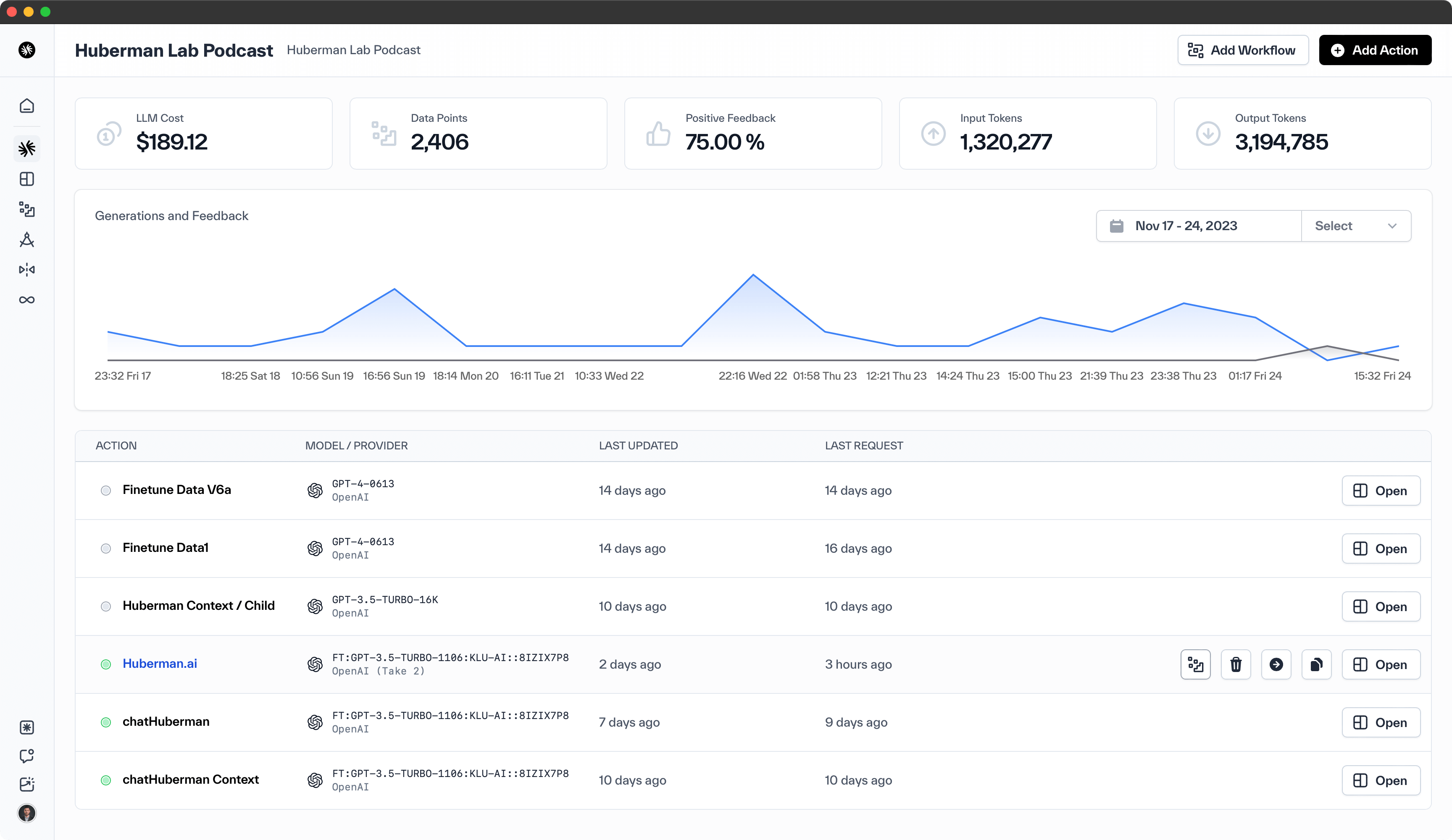What is a GenAI Product Workspace?
by Stephen M. Walker II, Co-Founder / CEO
A GenAI Product Workspace is a collaborative environment that integrates Generative AI (GenAI) capabilities into productivity tools to enhance user experiences, streamline workflows, and foster innovation.

GenAI is a type of artificial intelligence that generates new content such as text, images, and audio in response to user prompts.
Google AI has leveraged GenAI within its MakerSuite platform to enhance the creative and collaborative capabilities of users. MakerSuite integrates AI-driven tools that assist in generating innovative designs, code, and content, streamlining the creative process across various applications. This suite of tools includes features for automated design prototyping, code generation, content creation, and project management, all designed to facilitate a more efficient and intuitive user experience.

Another example is Klu.ai, a cloud-based workspace designed for rapidly iterating on GenAI products. It provides tools for prototyping and testing application pipelines, debugging and organizing user interactions, and visualizing user outcomes.
These GenAI Product Workspaces are designed to enhance productivity and collaboration, automate repetitive tasks, and provide more intuitive and context-aware tools for users. However, the effective use of GenAI still relies on human interaction, critical thinking, and creativity.
What is a GenAI Product Workspace?
A GenAI Product Workspace, like Klu.ai, is a next-generation workspace designed to facilitate the development, deployment, and optimization of AI products. It provides a comprehensive set of tools and services that streamline the process of building, evaluating, and deploying AI models for practical applications.
How does a GenAI Product Workspace work?
A GenAI Product Workspace, such as Klu.ai, works by providing a collaborative environment for AI product engineering, allowing teams to explore, save, and collaborate. It includes features for data collection and processing, model architecture design, training, and scaling. The workspace also provides resources for handling the ethical and transparency issues associated with deploying AI models.
- Collaborative AI product engineering — The workspace provides an environment to prototype models, track changes, and integrate into your product development workflow.
- Efficient search and retrieval — The workspace provides a feature for efficient search and retrieval of relevant data in the model's space.
- Rapid iteration with insights — The workspace provides usage and system performance insights across features and teams, helping understand user preference, model performance, and label your data.
- Fine-tuning custom models — The workspace allows you to curate your best data for fine-tuning custom models.
- Secure and portable data — Your data is secure and portable with Klu.ai.
What are the applications of a GenAI Product Workspace?
A GenAI Product Workspace like Klu.ai can be used to develop a wide range of AI products. These include natural language processing applications, image recognition systems, predictive analytics tools, and personalized AI assistants.
- Natural language processing — The workspace can be used to develop applications that leverage AI to understand text, answer questions, summarize, translate and more.
- Image recognition — The workspace can be used to develop systems that use AI to recognize and classify images for a variety of applications like surveillance, medical imaging, and content creation.
- Predictive analytics — The workspace can be used to develop tools that use AI to predict future trends based on historical data.
- Personalization — The workspace can be used to develop AI assistants that are fine-tuned on niche data to provide customized services.
How is a GenAI Product Workspace impacting AI?
A GenAI Product Workspace like Klu.ai is significantly impacting AI by simplifying the process of developing, deploying, and managing AI-powered products. It is enabling rapid progress in the field by providing a comprehensive set of tools and services that streamline the process of building, training, and deploying AI models. However, as AI models become more capable, it is important to balance innovation with ethics. The workspace provides resources for addressing issues around bias, misuse, and transparency. It represents a shift to more generalized AI learning versus task-specific engineering, which scales better but requires care and constraints.
- Rapid progress — The workspace is enabling rapid progress in AI by simplifying the process of developing, deploying, and managing AI-powered products.
- Broad applications — The workspace is enabling the development of a wide range of applications that leverage the capabilities of AI.
- Responsible deployment — The workspace provides resources for addressing issues around bias, misuse, and transparency as AI models become more capable.
- New paradigms — The workspace represents a shift to more generalized AI learning versus task-specific engineering, which scales better but requires care and constraints.